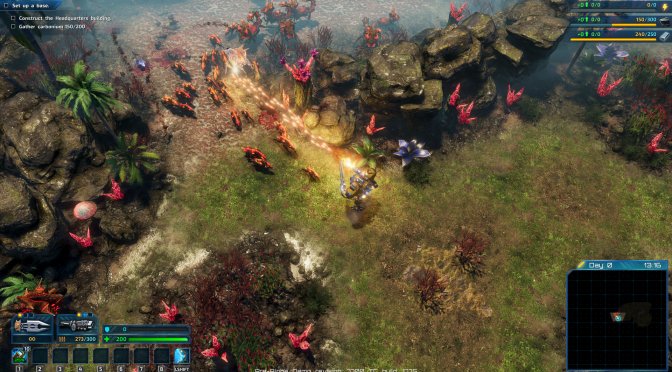EXOR Studios has released a new update for The Riftbreaker that adds support for DirectX 12 Ultimate. As the press release reads, the Alpha 4 preview update introduces a number of the latest rendering techniques and a benchmark mode to test if your PC is ready for raytracing.
The latest Alpha 4 preview update enables the use of the DirectX 12 Ultimate rendering API. DX12 Ultimate provides improved rendering performance and much improved image fidelity thanks to the introduction of raytracing.
The new update also introduces a new Benchmark mode that allows users to test their PC in high-intensity gameplay situations. A huge base siege scene with thousands of monsters trying to swarm the player is a great benchmark of CPU performance with work being efficiently parallelized onto multiple CPU cores. The GPU benchmark is perfect for evaluating your graphics card raw rasterization speed and is also ready for testing raytracing efficiency.
Below you can find some more details about the game’s DX12 Ultimate features:
Raytraced Shadows
Ray traced shadows allow us to introduce additional shadow casting lights into a scene, that provide much more immersion and detail into the world. For example, we can add an intense light source to a burning boss creature that walks around the scene and casts deep shadows from all of the details that are present in the world’s geometry, even singular blades of grass are going to cast perfectly detailed shadows. The environment in The Riftbreaker™ is dynamic and fully destructible, there are no faked light maps for static objects and this is also one of the reasons why real time ray tracing is perfect for the game – it creates a new, perfectly detailed shadow every frame. Another example of how real time ray tracing is used is special events like a comet flying over the player’s head. The comet is an intense light source moving quickly across the sky and creating a fantastic spectacle of shadows on the ground. This feature has been implemented using the DirectX® Raytracing (DXR) standard and is available on all GPUs that support DXR.
Raytraced Ambient Occlusion
Ray traced ambient occlusion is a very advanced rendering technique that simulates the behavior of diffuse lighting being occluded by complex geometry within a scene. It is an approximation of global illumination that was previously available in offline rendering and wasn’t actually done in real time. It provides excellent visual results in areas that are covered by dense vegetation or complex rock formations, by creating shade where bounced global illumination lighting should be occluded. Now thanks to the AMD Radeon™ 6000 series we can enable this technique in The Riftbreaker™ to achieve very detailed shadowing. This feature has been implemented using the DirectX® Raytracing (DXR) standard and is available on all GPUs that support DXR.
AMD FidelityFX Variable Shading
Variable rate shading is one of the latest DirectX 12 Ultimate rendering techniques that allows the GPU to select an area of the screen to be rendered at a lower sampling rate. AMD Fidelity FX Variable Shading allows us to very efficiently select areas of the scene that are low on detail and can be rendered with a lower sampling rate without any visible degradation to the image quality. Some of these low detail areas can include for example places covered in deep shadow, plain ground textures, or areas of the screen covered by transparent user interface elements. Thanks to this new rendering technique we can save a lot of GPU power and deliver much higher frame rates to the player.

John is the founder and Editor in Chief at DSOGaming. He is a PC gaming fan and highly supports the modding and indie communities. Before creating DSOGaming, John worked on numerous gaming websites. While he is a die-hard PC gamer, his gaming roots can be found on consoles. John loved – and still does – the 16-bit consoles, and considers SNES to be one of the best consoles. Still, the PC platform won him over consoles. That was mainly due to 3DFX and its iconic dedicated 3D accelerator graphics card, Voodoo 2. John has also written a higher degree thesis on the “The Evolution of PC graphics cards.”
Contact: Email

